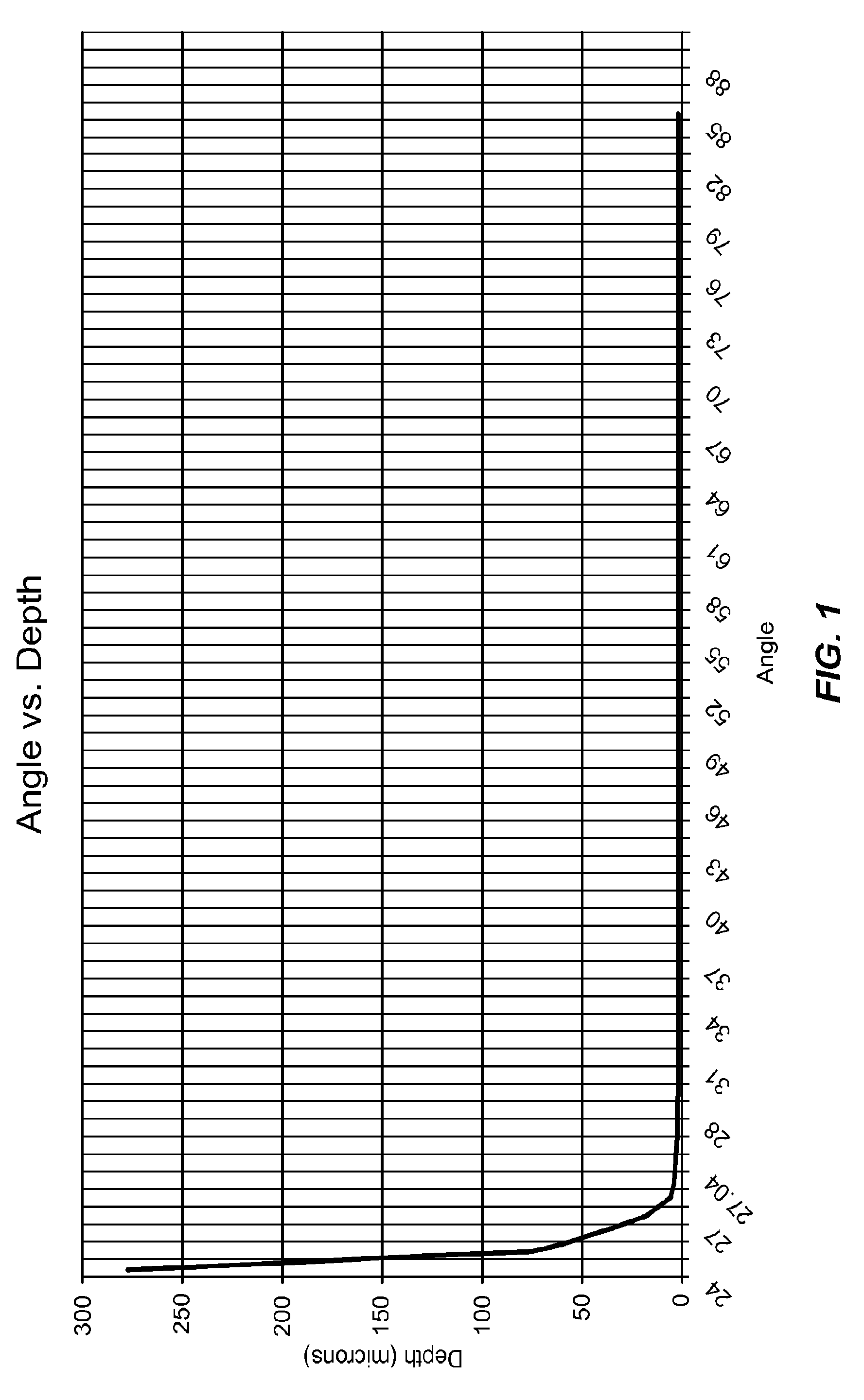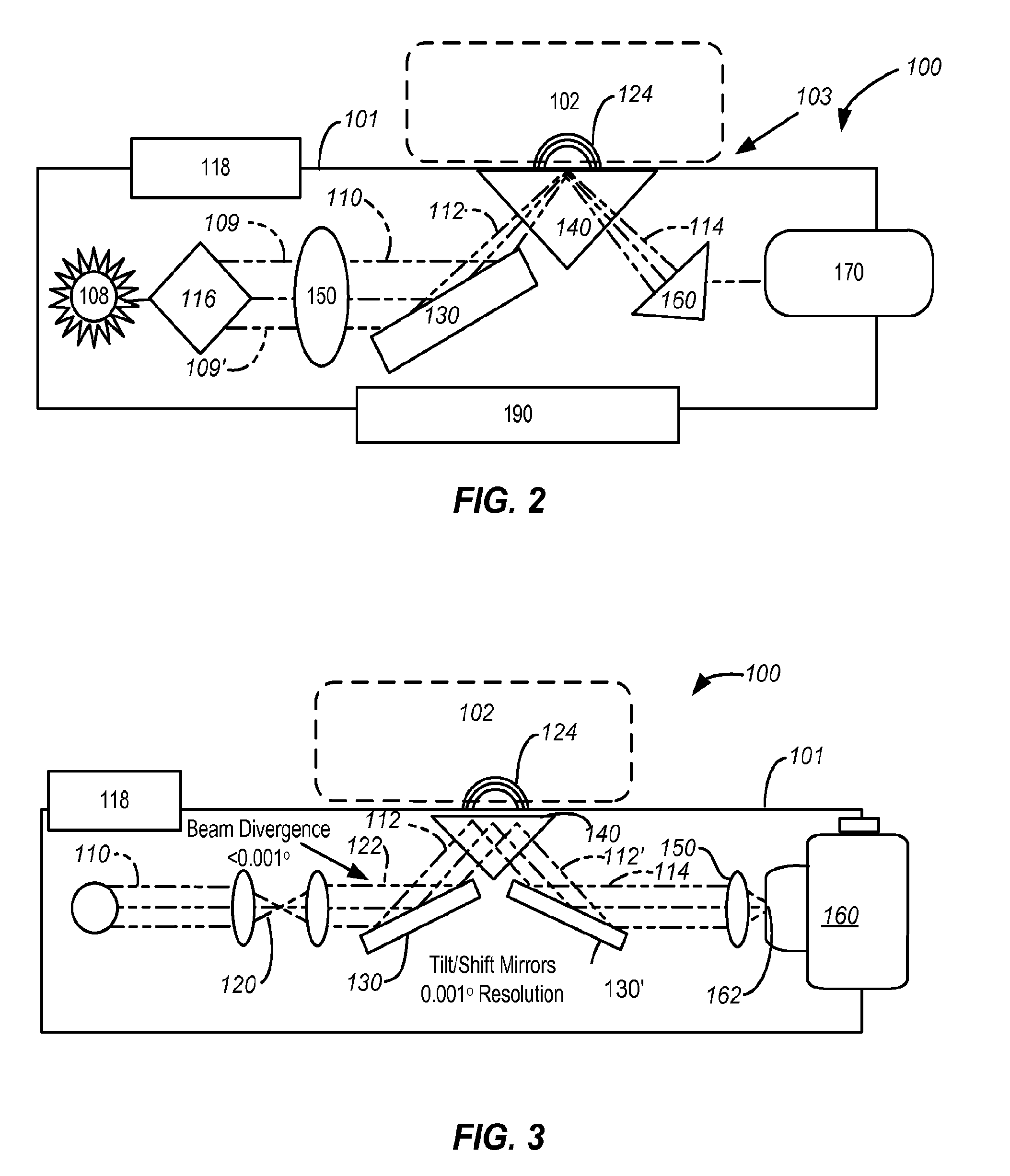Peri-critical reflection spectroscopy devices, systems, and methods
a spectroscopy device and spectroscopy technology, applied in the field of peri-critical reflection spectroscopy devices, systems, and methods, can solve the problems of difficult to use traditional techniques, difficult to integrate, and difficult to use internal reflection,
- Summary
- Abstract
- Description
- Claims
- Application Information
AI Technical Summary
Benefits of technology
Problems solved by technology
Method used
Image
Examples
example 1
Determining Blood Glucose Levels in a Mammal
[0099]The devices and methods described above can be uses to detect levels of blood glucose in a mammal. The skin surface of a patient can be placed in proximity to the system. Thereafter, the skin is radiated at a location with an electromagnetic radiation beam through the transmitting crystal. The beam penetrates the skin surface into the blood vessels. A beam is reflected back out from the location within the tissue and through the crystal. The return beam carries with it information indicating the blood glucose level in the user. The return beam can be analyzed using a suitable processor to provide, for example, a full map of reflected light intensity versus wavelength versus a mapping of the angle of incidence. This information can be correlated with other biological parameter information. Additionally, the map can be displayed on an LCD and / or communicated to a network. The device can be configured to use a first wavelength for gluco...
example 2
Non-Contact Inspection of Materials
[0100]Another application is in the area of non-contact inspection. Normally with ATR, it is essential to create a very intimate optical contact between the ATR crystal and the specimen under test. Without this intimate contact, an intermediate layer, usually air, must be considered in the refractive index and depth calculations. With powders and other irregular samples, it is often impossible to remove all of the air space. As a result, the measurement is often unstable from one measurement to the next. The other reason for intimate optical contact is that since the depth of penetration is so small in ATR, the goal is to get the specimen as close to the crystal as possible, where the evanescent field is the strongest. With the present disclosure, it is possible to make the depth of penetration much larger. Therefore we can get very good spectra even when the specimen is not in physical contact with the ATR crystal. The problem of instability in th...
example 3
Pesticide Detection
[0101]Another application is in the area of pesticide detection. A device as substantially described above could be configured to enable consumers to detect levels or types of pesticides on produce in a grocery store, within their pantry or after washing the produce at home.
PUM
| Property | Measurement | Unit |
|---|---|---|
| volume | aaaaa | aaaaa |
| volume | aaaaa | aaaaa |
| volume | aaaaa | aaaaa |
Abstract
Description
Claims
Application Information
 Login to View More
Login to View More - R&D
- Intellectual Property
- Life Sciences
- Materials
- Tech Scout
- Unparalleled Data Quality
- Higher Quality Content
- 60% Fewer Hallucinations
Browse by: Latest US Patents, China's latest patents, Technical Efficacy Thesaurus, Application Domain, Technology Topic, Popular Technical Reports.
© 2025 PatSnap. All rights reserved.Legal|Privacy policy|Modern Slavery Act Transparency Statement|Sitemap|About US| Contact US: help@patsnap.com



